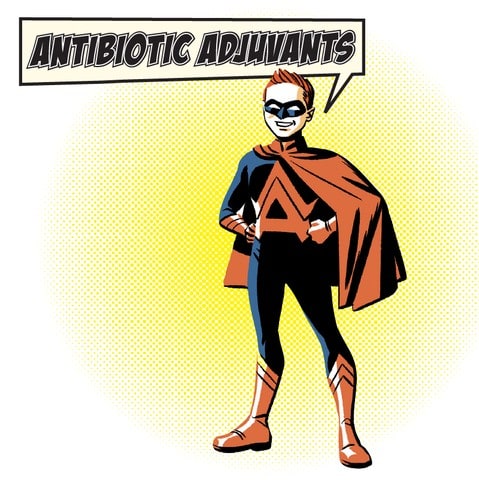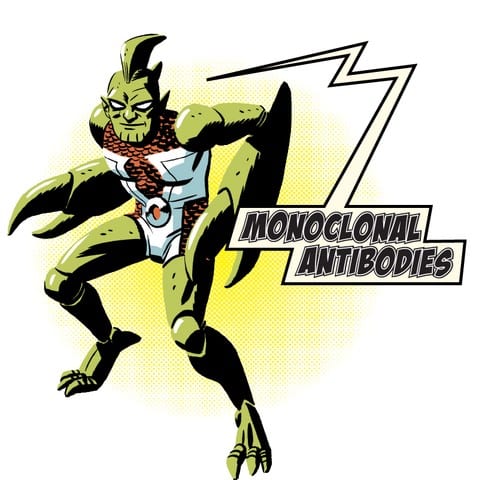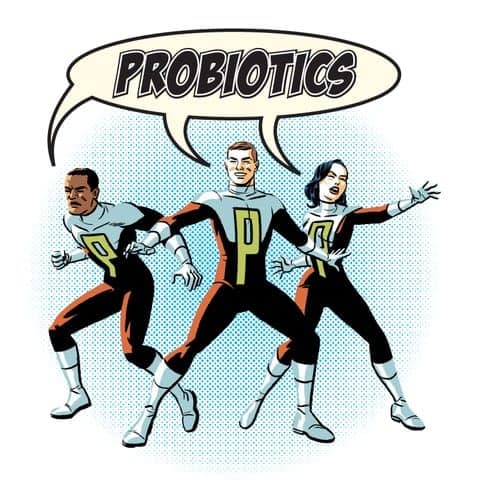Published On September 21, 2018
The ominous future, in which antibiotics are powerless against the bacteria that threaten human health, may already be here. Hordes of antibiotic-resistant microbes mount attacks on the skin and in the gut, and many have overrun hospitals, where they can be lethal to patients with weakened immune systems. The bugs are particularly devastating when they attach themselves to implanted devices. Hidden inside the body, where they are able to multiply undetected, the bacteria can be almost impossible to eradicate. Often the only solution is for surgeons to remove the infected device and clean out the affected area—and hope that the infection hasn’t spread too far.
In one such case, the polyester graft used to repair an elderly man’s damaged aorta was infected with Pseudomonas aeruginosa. This potentially deadly bacterium can cause pneumonia and other maladies, and in recent years it has become increasingly impervious to antibiotic therapy. The infection repelled repeated courses of treatment with traditional medications, and the patient’s frail condition precluded replacing the graft.
What options are available when antibiotics fail? After this man’s physicians at Yale New Haven Hospital had tried everything normally at their disposal, they contacted Benjamin Chan, a microbiologist at Yale University who studies and collects bacteriophages—viruses that infect and destroy bacteria. Often known simply as phages, they’re the most abundant organism on the planet, and are found in soil and bodies of water, especially pools of sewage and landfills that are thick with bacteria. Phages come in untold varieties, with each one targeting a particular species or strain of bacteria.
Chan tested a culture of the patient’s P. aeruginosa infection against his library of phages and identified a few—found in a water sample from a Connecticut lake—that looked promising. With an OK from the Food and Drug Administration to make use of an emergency investigational new drug, doctors injected the phages— together with an antibiotic—near the site of the infection, where the aorta meets the heart. After the procedure, the P. aeruginosa disappeared and didn’t recur during the final two years of the man’s life. He died this year on March 8, the same day Chan and his colleagues published their case report in the journal Evolution, Medicine, and Public Health.
Illustration by Michael Cho Illustration by Michael Cho Illustration by Michael Cho Illustration by Michael Cho Illustration by Michael Cho Illustration by Michael Cho Illustration by Michael Cho Illustration by Michael Cho These “helper” compounds can boost the power of conventional antibiotics by targeting bacterial resistance. Adjuvants can stop bacteria from producing protective enzymes, or cause them to in ingest more of an antibiotic. Some are already in use, and others are in development. Hippocrates used copper and silver to treat wounds more than 2,000 years ago, as those and other metals have antimicrobial properties. Studies are currently looking at the potential of gallium (an iron-like element) for management of Pseudomonas Aeruginosa infections in people with cystic fibrosis. When phages need to destroy the cell wall of a bacterium to release their progeny, they use toxic enzymes called lysins. Lysins attack a part of the bacterium that isn’t as prone to mutation. That means that medications based on these enzymes may be slower to encounter resistance. Human trials of lysins are currently underway. These copies of antibodies that occur naturally in the body show promise. They sink their claws into bacterial invaders, and can neutralize them directly or enlist other parts of the immune system to join the fight. The models for some of the monoclonal antibodies currently in development are taken from people who display strong resistance to infections. Harmless or beneficial bacteria can help fight infection by crowding out bacteria that have more pernicious agendas. Probiotic products on the consumer market are of uncertain value, but many studies have pointed to the benefits of fecal transplants in managing C. difficile and other hart-to-treat infections. Viruses have been duking it out with bacteria since the dawn of life on earth, and for a century physicians have used them in a limited way to fight bacterial infection. With the advent of CRISPR-Cas9 and other gene-editing techniques, researchers are better able to tailor bacteriophages to seek out and kill specific bacteria. Ultraviolet light has long been used to kill bacteria. A new twist uses photosensitive dyes in the body, activated by laser light. This method has been shown to cure bladder infections in rats. The work is a collaboration between Wellman Center for Photomedicine and the Vaccine and Immunotherapy Center at Massachusetts General Hospital. Fighting fire with fire, some labs are working with species of bacteria that attack others. Bdellovibrio bacteriovorus tunnels inside its foes, and Micavibrio aeruginosavorus latches onto its opponent’s shell. Experiments are already underway to see whether these two can be “trained” to safely prey on human pathogens.







Antibiotics, one of the signature advances of twentieth-century medicine, have saved hundreds of millions of lives, and have made possible many other medical breakthroughs, such as organ transplants and complex surgeries. Yet decades of overreliance on and overuse of the drugs have led to a generation of bacteria that have evolved to evade this line of attack. Already, about 2 million Americans every year become ill as a result of antibiotic-resistant bacteria, and at least 23,000 die. Those numbers will almost certainly rise.
The ideal solution would be to develop new antibiotics that fight bacteria in novel ways. But few are in development, and most that do reach the market are simply modifications of older antimicrobials—making it relatively easy for bacteria to find ways around those, too. Without new solutions, the global death toll from antibiotic-resistant infections could exceed, by 2050, the number of people who die from cancer.
Most current strategies to prevent that dire scenario encourage wiser, more limited use of antibiotics. But an emergent effort is looking at entirely different therapies, including phages, that attack bacterialinfections in new ways. Some labs are investigating monoclonal antibodies—manufactured versions of the immune system’s own defenders—that can target specific bacteria. Others are looking at light, metals or other bacteria, each of which affect infectious invaders differently.
In 2016, the Wellcome Trust, a British biomedical research charity, identified 19 different approaches under investigation as alternatives to conventional antimicrobial therapy. These are at various stages of promise and development, and some may work best in conjunction with conventional antibiotics, while others could create new classes of stand-alone therapy. While some show effectiveness only in limited settings, a few offer hope that antibiotics may ultimately get new and much-needed allies on the front lines of infection.
bacteria multiply rapidly, and the genetic mutations that arise in each generation offer a chance of helping them ward off an antibiotic—for example, by producing protective enzymes or increasing the activity of proteins called efflux pumps that suck in and spit out the drugs. Bacteria may also share genetic material with one another, through a process known as horizontal gene transfer, which can also spread resistance quickly.
But if bacteria evolve rapidly, so do phages, their nemeses for billions of years. A phage injects its DNA into a bacterium and reproduces up to 100 progeny phages. To escape, the phage produces an enzyme called a lysin, which splits the bacterial cell wall, causing the bacterium to explode. The study of these bacterial enemies and their use to fight infection actually predated the development of antibiotics, but after the arrival of penicillin, first tested in humans in 1941, most physicians gave up on phages.
Still, doctors in the former Soviet Union and Eastern Europe, in particular, never stopped using them, and the Eliava Phage Therapy Center in Tbilisi, Georgia, treats the antibiotic-resistant infections of several thousand patients each year. Now that physicians in the United States have seen their potential, in part because of the recovery of Chan’s patient and other high-profile successes, the study of phages has geared up.
One advantage of phages is that they home in on specific bacteria. That trait forestalls diarrhea and other common side effects of treatment with conventional antibiotics, which may also kill healthy microbes in the gut and elsewhere in the body. And while bacteria can become resistant to phages, that may not be a problem if a phage is paired with an antibiotic, says Chan. He notes that P. aeruginosa resists antibiotics by increasing the activity of efflux pumps. When exposed to a phage, however, P. aeruginosa alters its efflux pumps to expel the virus—and that leaves the bacterium unable to defend itself against an antibiotic. “As far as we can tell, P. aeruginosa will be resistant either to a phage or to an antibiotic,” says Chan. “It seems not to be both.” He and his colleagues are studying whether similar phenomena occur in other species of resistant bacteria.
Before a specific species of bacteria can be treated, it must be tested against dozens of phages to find the right fit. “That’s not apractical way to treat patients,” says Paul Grint, chief executive officer of AmpliPhi, a San Diego biotech company that supplied some of the phages used in other successful treatments. What’s needed, he says, is a premixed phage cocktail that would work for most patients. To that end, AmpliPhi has identified a combination of three phages that Grint says has proved effective against 96% of multidrug-resistant samples of Staphylococcus aureus. The combination is now in early clinical trials for treating chronic sinus infections, and the company believes the drug could yield broader applications as therapy for bacteremia (blood infections) and endocarditis (infection of the heart lining). The future of phage therapy, Grint says, is “a vial you could pull out of the fridge” to fight most infections.
Phages themselves depend on a potent weapon—lysins, the enzymes produced by the viruses that actually burst open bacteria to release their progeny phage. “Since half of the bacteria on Earth are killed by phages every two days, lysins may be considered the most effective bactericidal agent,” says Vincent Fischetti, head of the Laboratory of Bacterial Pathogenesis and Immunology at Rockefeller University in New York City.
Fischetti and his colleagues have produced lysins from lysin genes acquired from many phages, including some found in New York’s East River and a landfill on Staten Island, and they have shown that lysins can rapidly resolve pneumonia, Clostridium difficile infections (CDI), bacteremia and other bacterial infections in animals. Like the phages they come from, lysins target specific bacteria, so they don’t kill healthy gut flora and cause gastrointestinal problems. Yet because lysins attach themselves to receptors on a bacterium’s cell wall that are unlikely to mutate quickly, lysins are far less vulnerable to resistance than phages are. “Resistance will eventually occur, but it’s going to take much longer than for conventional antibiotics,” Fischetti says.
ContraFect, a biotech company in Yonkers, N.Y., is developing a lysin from Fischetti’s lab that targets methicillin-resistant S. aureus (MRSA), which kills more than 9,000 people per year. Now the drug, CF-301, is being studied in conjunction with traditional antibiotics in a phase 2 trial of 117 patients with MRSA infections of the blood and heart valves. “In theory, the single dose of lysin will reduce the bacterial load in the infection,” Fischetti says. “Then the patient’s immune system and the antibiotic will mop up whatever’s left.”
Another solution may come from mimicking the immune system at work. More than a third of patients who recover from C. difficile infection after antibiotic therapy soon have a recurrence of symptoms, including diarrhea and colitis. That second bout may be even more severe and challenging to treat, and the infection is very likely to recur yet again. But a new drug from an emerging class of treatments—a human monoclonal antibody(mAb)—has shown success in neutralizing this kind of infection.
A mAb is a laboratory version of naturally occurring antibodies, the proteins that human immune cells produce to ward off infectious invaders. Those manufactured proteins can take aim either at bacteria or their products. The mAb bezlotoxumab neutralizes a toxin the C. difficile bacterium produces, and in a 2017 trial, just 17% of CDI patients who received antibiotic therapy and bezlotoxumab experienced a recurrence within 12 weeks, compared with 28% of patients treated with antibiotics only.
Several pharmaceutical developers are betting that this emerging class of medicines can assist and eventually replace conventional antibiotics. One way to discover them is to enlist the rare few people whose exceptionally potent immune system B cells churn out antibodies that can help the body survive severe, usually lethal infections. “We find those patients and screen their B cell repertoire for cells that make highly pathogen-neutralizing mAbs, then move directly to large-scale manufacturing,” says Vu Truong, CEO of Aridis Pharmaceuticals of San Jose, Calif.
Those harvested B cells become “antibody factories” and produce mAbs that are able to lock on to bacteria or their most dangerous products. Aridis now has several mAbs in clinical trials for treating acute pneumonia caused by S. aureus and P. aeruginosa. “We can now develop and engineer an anti-infective that’s going to be way better than an antibiotic,” Truong says.
While none of these new treatments is yet ready to displace traditional antibiotics in the physician’s arsenal, they are already providing a powerful second line of defense. And as they come into their own, the ability to prescribe alternative therapies may help slow the speed of bacterial resistance, by reserving more powerful therapies for times when they are truly needed. Together, these could push the threat of drug resistance much further down the road.
Dossier
“Alternatives to Antibiotics—A Pipeline Portfolio Review,” by Lloyd Czaplewski et al., The Lancet Infectious Diseases, February 2016. This paper provides an overview of the most promising novel approaches to treating bacterial infections.
“Development and Use of Personalized Bacteriophage-Based Therapeutic Cocktails to Treat a Patient with a Disseminated Resistant Acinetobacter baumannii Infection,” by Robert T. Schooley et al., Antimicrobial Agents and Chemotherapy, August 2017. A detailed account of how doctors saved the life of a patient with a multidrug-resistant infection using phage therapy.
“National Action Plan for Combating Antibiotic-Resistant Bacteria,” by the U.S. Task Force for Combating Antibiotic-Resistant Bacteria, Progress Report for Years 1 and 2, October 2017. This extensive progress report outlines the U.S. government’s initiative in the battle against antibiotic resistance.
Stay on the frontiers of medicine
Related Stories
- The War on Superbugs
As medicine battles antibiotic resistance, tougher drugs breed still more deadly bacteria. New approaches could break the cycle.
- Bright Future for the Feces Cure
Transplanting healthy human feces became a breakthrough treatment for C. diff infection. Now researchers ask—can it do more?
- A Second Act for Phages
As resistance to antibiotics grows, might phages, a treatment that fell out of favor decades ago, be the answer?